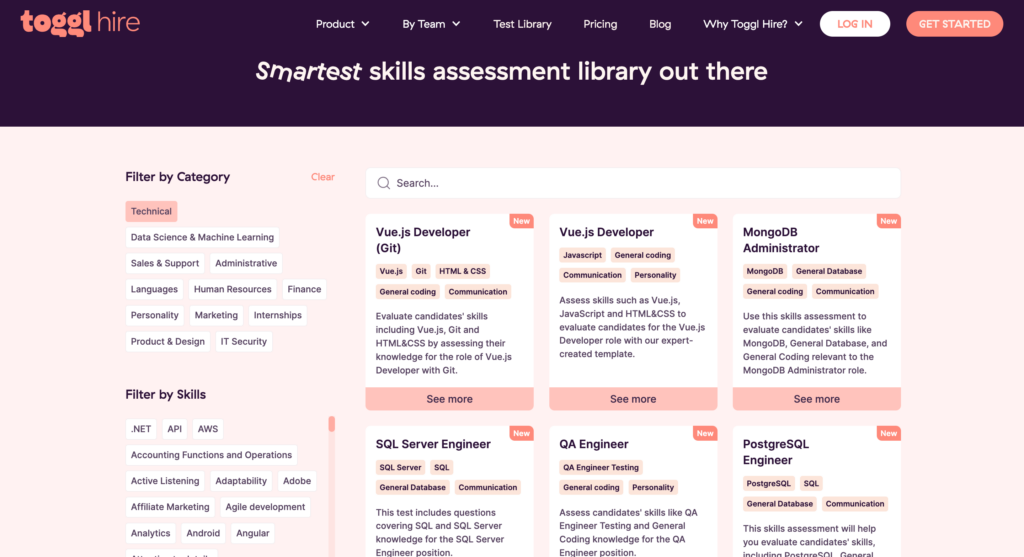Imagine a recruiter who took all the standard steps for attracting passive candidates, like posting on Linkedin, job boards, and updating their careers page, but only a handful of candidates, if that, applied. What went wrong?
If that sounds like a problem you’re having, then you’re in the right place. In this article, we’ll be looking at some of the more creative sourcing strategies you could try to help unblock your hiring pipeline and get those passive candidates flowing in.
TL;DR – Key Takeaways
- More than 70% of the global workforce are passively looking for new jobs and so may be open to a new working challenge.
- But if you’re only targeting active job seekers, you only see 30% of the talent pool when you receive applications. That’s a lot of talent that you may not have access to!
- The best way to catch passive candidates is to play the long game. And to win, your company needs to act on a sourcing strategy for attracting passive candidates to be on their minds when the time – or opportunity – is right.
- Hiring strategies that hiring managers and HR teams should consider involve activating and engaging the passive talent pool with social media, skills challenges, employee referrals, and, last but not least, your employer brand.
- Examples of more creative candidate sourcing strategies include creating campaigns for YouTube, building a passive candidate database from in-person events, or even leveraging dating apps to find the right match.
- You can use Toggl Hire to challenge passive candidates to skill tests or invite them for a fun and quick video interview. We help make your hiring process as easy and seamless as possible.
Hold on, why should I focus on attracting passive candidates?
One of the most commonly asked questions when discussing passive candidate sourcing strategies is this: why bother?
Here’s the deal: about 70% of the global workforce is passively looking for another job and would, in fact, gladly accept a change in their work environment.
What’s more, the flip side of this stat suggests that by only targeting active candidates, you’re limiting yourself to a much smaller fraction of the global talent pool.
There are also some advantages to sourcing passive candidates.
- First, because they’re not actively pursuing a new position, they won’t be interviewing with anyone else but you. This means less competition for you.
- They’re also highly unlikely to lie or exaggerate on their resumes. They’re content with their job (for the most part), and they’re (usually) not desperate to find their next gig.
- And finally, you’re ideally looking for someone with a specific skill set that closely matches what you’re looking for. You know exactly whom you’re hiring and what they currently do in their position. This means less time and resources spent on training.
Now, if we look past the fact that only 33% of the US population is engaged with their job, this means that there is a vast pool of excellent candidates for your next opening – you just have to know how to reach them.
Why should I consider using creative sourcing strategies?
While job boards can be a great way to get candidates, the hard truth is that they tend to be very expensive. Not to mention, the overall quality of candidates coming through job boards tends to be low, and, perhaps the most crucial fact, 85% of the workforce doesn’t scan job boards.
So, you need to think outside of the box to get in front of quality, passive talent. Luckily, we’re here to help.
Below are 22 creative sourcing strategies that will help you attract qualified candidates. To help you navigate all these ideas, we’ve split them up into 6 different categories:
- Factors that can make candidate sourcing difficult
- Career Site & Job Postings
- Social Media Sourcing
- Competitions & Skills Challenges
- Employee Referrals
- Sneaky Candidate Sourcing Strategies
Social media sourcing
Social media sourcing is likely already a part of your hiring process strategy. But are you optimizing it? And maximizing your reach across each unique platform?
Here are a few quick tips and real company examples to help get you to win the hearts and careers of passive candidates across social media platforms:
1. LinkedIn: The site for professionals
We’re not going to beat around the bush: LinkedIn, with all its bells and whistles about celebrating the tiniest achievement, is still the best place to find professional candidates. But what is the best way to attract candidates?
It might just be time to embrace your creative side and try document posts. You’ve seen them around LinkedIn: they’re basically pages of a PDF that you can easily click through on a post. And they’re almost always eye-catching.
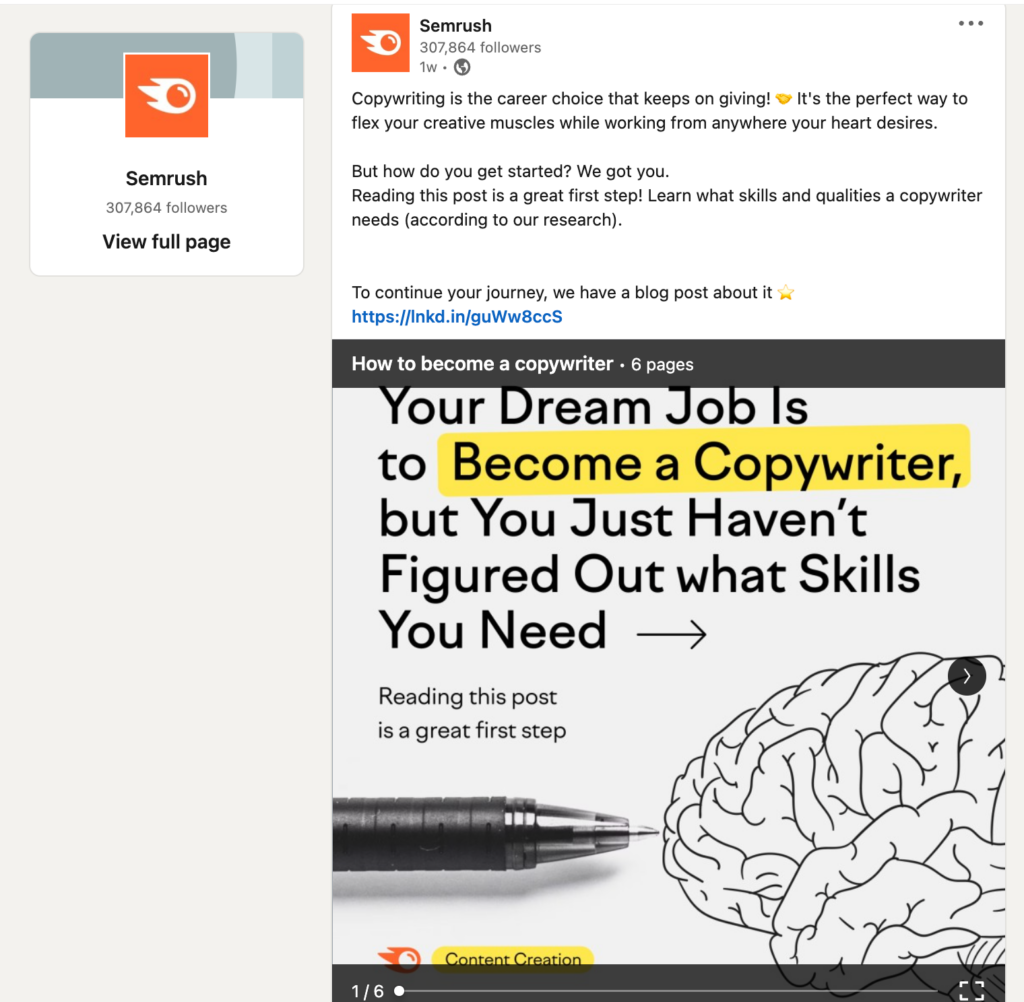
2. Facebook: Use Facebook paid ads to source passive candidates
Nobody should underestimate Facebook when it comes to sourcing candidates.
Compared to Linkedin and job boards, sourcing candidates on Facebook is often cheaper and faster and can help you reach more (passive) high-quality candidates. And this may surprise some, Facebook is still the number one tool for marketers (ergo, other companies sourcing candidates worldwide!)
There are many different ways to source candidates on Facebook. You can:
- Manually source candidates with creative search queries
- Create an appealing Facebook job post and share it with your followers
- Boost your job posts to reach a wider audience
- Share your job posts on Facebook groups and communities
- Turn your job posts into an advertising campaign to specifically target the right kind of people (the most efficient tactic).
For example, Software development company Mooncascade received close to 250 candidates in a few days simply by advertising the post on Facebook and Linkedin.
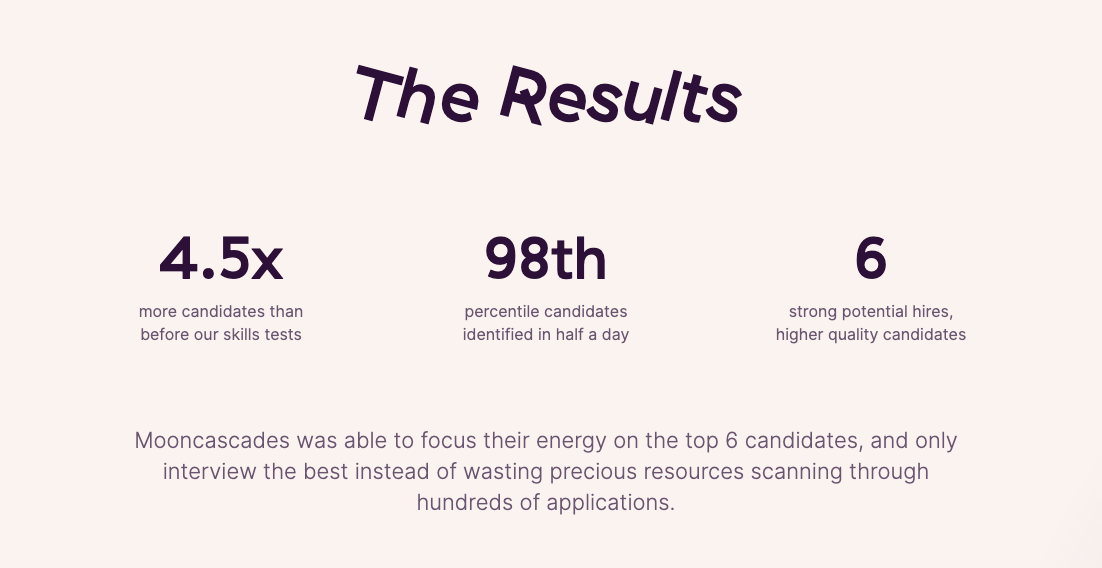
3. Twitter: Actively promote your jobs on Twitter
Frequently tweeting about job postings is a highly efficient way of reaching potential candidates. In our experience, posting around 3-5 tweets per day is the sweet spot. People might not see your tweet the first time, so posting several tweets about an opening helps you reach more people.
To draft up a good tweet that encourages people to re-share it, use hashtags, pictures, and a clear call-to-action. It doesn’t hurt to ask existing employees to retweet a few of your company’s tweets, either!
If your job tweets get a lot of traction, you could also try out paid promotions. You can even use it for retargeting candidates who have visited your Careers page but didn’t complete an application.
4. Podcasts: Use podcasts to stand out
Getting on a relevant podcast gives you an opportunity to introduce potential candidates to your work culture and employee benefits in more detail.
48 Days Podcast, Career Cloud, and The Job Hunting Podcast all focus on helping candidates land their next position. Reach out to shows like these to ask about sponsorships or if they can mention your organization. They already have a captivated audience of people hunting for their next challenge.
If you’re looking for a highly-skilled new hire, consider sponsoring niche podcasts that have built an audience of experts in that field. For instance:
- Lenny’s podcast – for product management and growth
- Revenue vitals – for marketing talent
- Data Skeptic – for data science
- People Managing People – for HR and management
- Indie hackers – for development talent
5. YouTube: Attract candidates with work culture videos
The highly effective idea is to utilize the channels where your target candidates are hanging out online. For WizzAir, that channel was Youtube. Under the umbrella campaign of #IamWIZZcrew, WIZZ made it easy for anyone interested in pursuing a carrier at WIZZ to find out more about the company, a career in aviation, and tips on pilot and cabin crew recruitment, from its own employees.
Those interested could already find thousands of pictures, posts, and tags on various social media channels created by many of the enthusiastic crew members showing their dedication to the company, passion for aviation, and WizzAir’s company culture.

6. Tinder: Use Tinder to attract millennials
This one might sound too “far-fetched” for most, but creative agency Fetch used Tinder to help them find an intern – with great results. In one day, they received 270 potential applicants (Tinder matches) from whom they asked for their best pick-up line. They then spent 3 weeks talking to the applicants and narrowing the talent pool down to 5 best candidates.
The agency went on to explain the rationale behind their unusual recruitment choice by saying:
New York City is a very crowded space, with every agency looking for top talent. We needed an intern and we didn’t just want to be another posting on one of the numerous job boards. So, we thought Tinder would be quite an innovative way of looking for an intern.
If this piques your interest, why not try Bumble, OkCupid, eharmony, Match, Kippo, or one of the other top-rated dating apps to engage candidates?
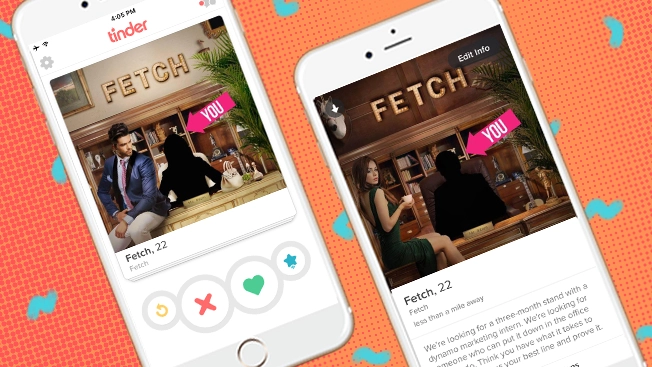
7. Snapchat: Brand your company among young candidates on Snapchat
JPMorgan created its own geo-filters to be used at high school and university events in the UK and the US. The thought behind the strategy was to show students that you don’t need to go down a traditional route to find employment at a bank. They highlighted different roles and jobs that one might not even consider when looking at the banking industry. Doing this on a platform that millennials trust made this even more powerful for JPMorgan.
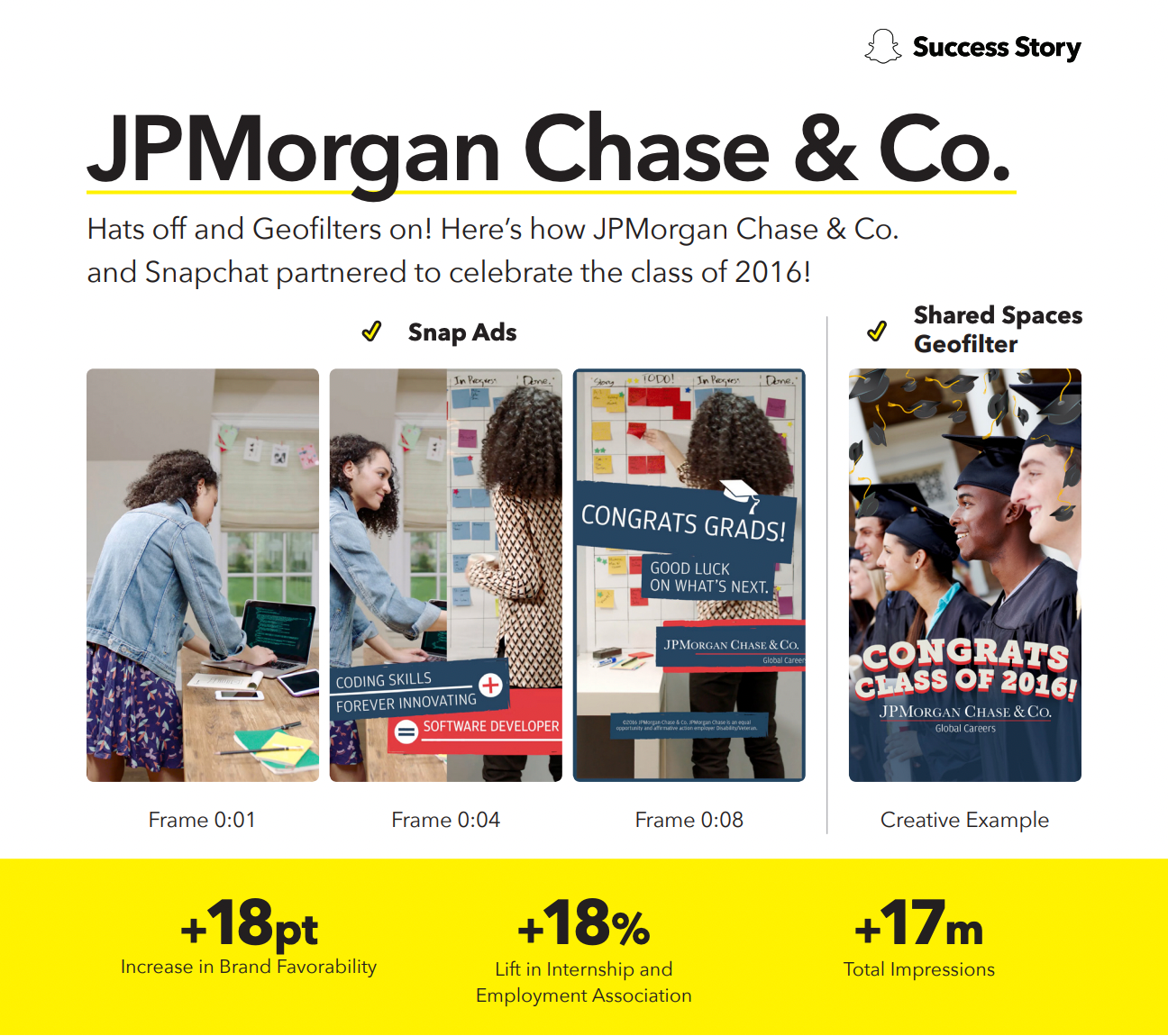
8. TikTok: Leverage the most powerful Gen-Z platform
While TikTok users might not be actively searching for a new gig, you can showcase your employer brand to millions of users on the platform.
TikTok can be a great way to recruit potential candidates from a younger, tech-savvy (and mostly Gen-Z) demographic. Film your staff taking part in challenges, or participate in the trending hashtags. And partner with employees and influencers to help bolster your presence.
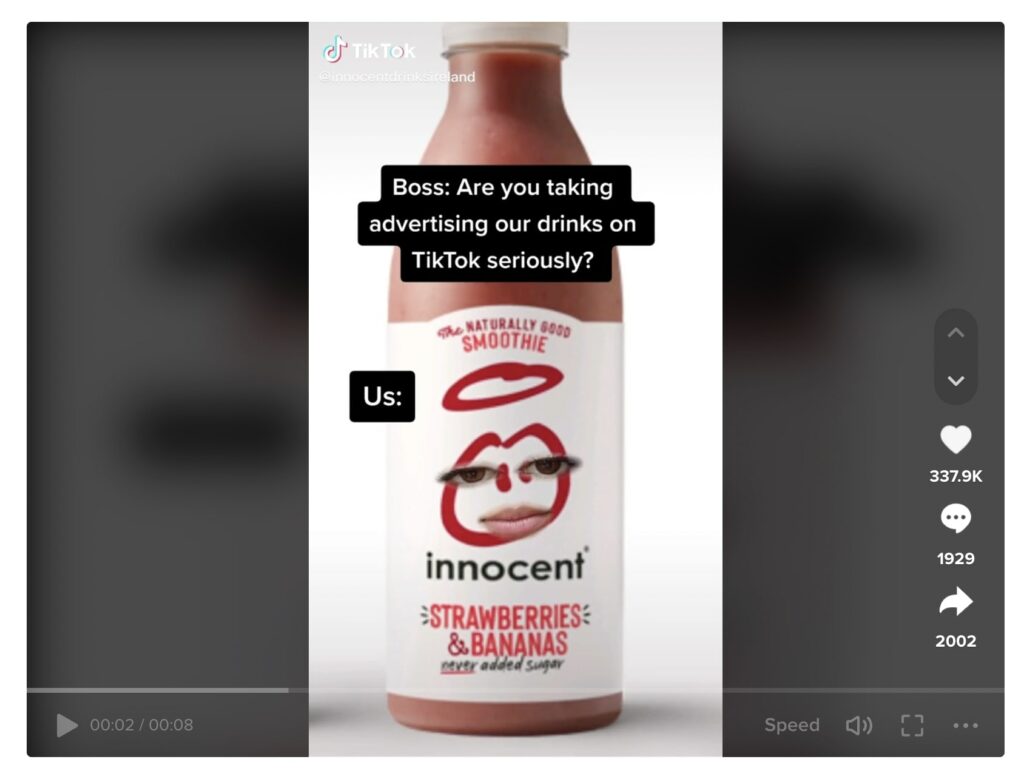
Just don’t forget to include a call-to-action in your videos to direct the viewers to your job postings and careers page.
9. Use public Slack channels
Besides being an incredible tool for team communication, Slack is also great for connecting with like-minded people and potential passive candidates. There are lots of public Slack groups that you can join and share your job posts for free!
PS! Check out our full list of 109 Slack communities to find new hires for more.
10. Sponsoring a niche newsletter
Sponsoring newsletters tailored towards a niche market can be a great way to find new hires. By targeting an industry or interest group, you are more likely to engage potential job seekers who are not actively seeking job openings.
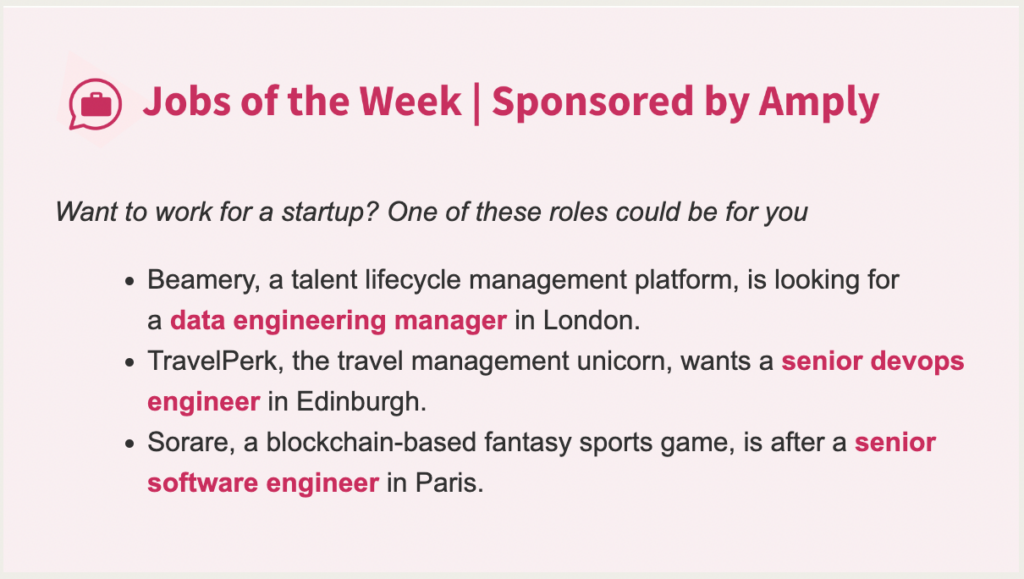
Just remember to make sure the newsletter aligns with your company’s values and goals. This will help you gain appropriate exposure and promote your job openings directly to the most relevant candidates.
Competitions & skills challenges
In this next section, we look at the types of challenges, games, and competitions you could leverage to attract candidates and start building those key potential relationships.
11. Grab applicants’ attention with short skills challenges
Another creative strategy for sourcing passive candidates is to make the application process simple, fun, and competitive with a skills test.
Instead of asking applicants to send their resumes, Harvard Business Review advises everyone to start the recruitment process with a short skills test.
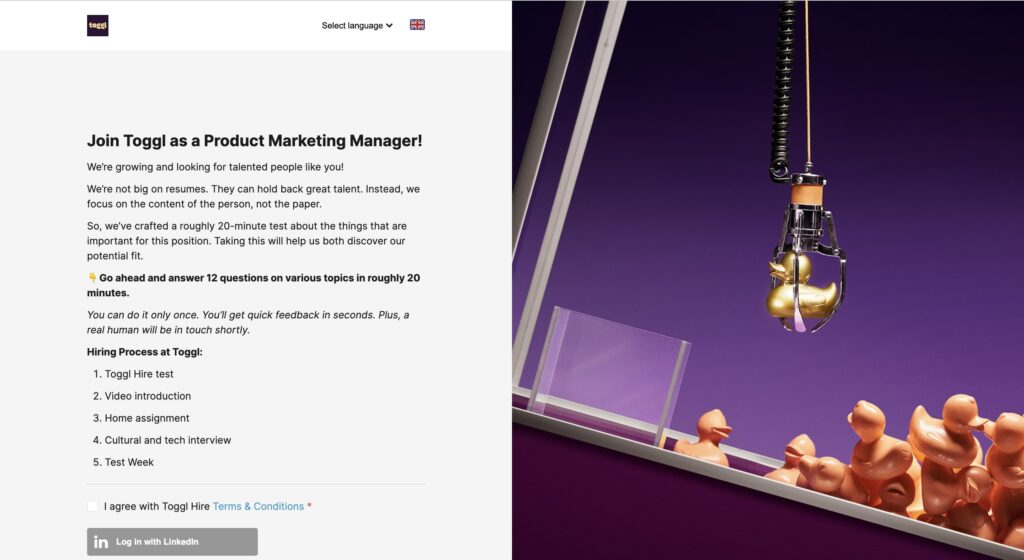
The beauty of using a 10-15 minute skills challenge in the first part of the recruiting process is not only in faster candidate screening. It also helps you attract those candidates who aren’t actively looking for a new job. Drafting up a resume and a cover letter takes a lot of time and effort, but taking a short test to figure out your skill level and learn more about the job opportunity removes the barriers to applying for jobs.
Tip! Get started with Toggl Hire and create your own skills challenge for free.
12. Attract passive candidates with rewards
To attract even more passive candidates with skills challenges and competitions, reward the best performers with a small gift, like free T-shirts, pencils, tote bags, or whichever other merchandise product you may have. Sure, some people will apply for your jobs just to get that free T-shirt, but once you get them hooked, it will be a lot easier to convince them to come to the interview with you.
Employee referrals, influencers, events
Most organizations are leveraging the proven-success record of referral programs today, with almost 45% of new employees being internal hires. Your existing employees have an exponentially wider social media and professional network, making it easier for you to potentially reach hundreds of qualified individuals when there’s an opening.
Employee referral programs are also more reliable and cost-effective as there is no job board or recruiting agency fees involved. Your internal labour expenses are also reduced with less time being spent on writing a job description writing, posting ads, resume evaluation, and candidate screening. Referred employees have a higher retention rate, owing to the implicit commitment they feel towards the contact who referred them.
13. Ask for your team’s help
It’s important to ask for help and not just assume the intent. Especially since 9 times out of 10, people will be excited and happy to help you source candidates and find new employees. So just ask your teammates to help you with the common goal of building an awesome crew. Share the information about the open position so your team can pass it on and/or look for candidates from their own networks — it could be an untapped talent pool.
14. Offer your employees referral bonuses
If you face any issues motivating your employees to share the open roles on social media, creating an internal employee referral program leaderboard to gamify the incentives of more referrals could be just the solution. To make your life easier, there are even special apps focusing on employee referrals – find your favourite one here.
15. Engage with passive candidates offline
Have meaningful conversations for the sake of conversations. Build relationships, and show that you’re not a desperate salesman trying to recruit someone all the time (even if that’s how you feel). Go the extra mile, reach out to prospective candidates offline, and invest in ways that show that your company is a great place to work.
16. Host events
No matter what the event is, you’re at a competitive advantage when you get the prospective talent in the room. They will see your office, meet your team, and hear more about your culture. After all, 85% of open positions are filled through networking.

17. Go big and go bold with out-of-home advertisement
Place ads in public spaces like billboards, bus stops, or subway stations with eye-catching visuals and succinct messaging to communicate your company’s culture and values. Target high-traffic areas that align with your industry or target demographic, place them around your head office and, to be a little bit cheeky, place them around the offices of your competitors.

Utilize technology, like QR codes, on signs that are placed at eye level – like posters or bus-stop advertisements that the user can scan. These QR codes should like back to the job listing or jobs portal.
Your employers, your CEO, your knowledge
Your organisation already contains a wealth of knowledge with its employees, so why not show it off to potential candidates?
18. Showcase your employees, managers, and c-suite
Promote employees’ personalities, talents, and stories on social media and your website. Automattic features employees in videos on their YouTube playlist, Harvest showcases employee stories on their website, and HelpScout’s blog is primarily written by employees. Encourage employees to record webcam videos and prioritize the content over video quality.
19. Post content on Medium
Expand your audience and attract top talent by publishing on the blogging platform Medium. Basecamp CEO Jason Fried used Medium to generate interest in Basecamp while sharing his thoughts on design, business, and technology. Encourage co-founders and team leaders to post on Medium about challenges and their solutions.
‘Sneaky’ candidate sourcing strategies
Last but not least, we’ve racked our brains for some of the more sneakier strategies that you could try.
20. Promote dev jobs on your site’s browser console
Usually, whenever a developer wants to check the code behind any website, view the site’s CSS files, or check anything else code related, they’ll open the site’s console. So what’s a better way to get developers’ attention than adding a big “We’re hiring” message right in the console?
Yes, the ideal candidates will easily spot this.
Further reading: 30 Best Pre-Employment Testing Tools
21. Use your own product as a sourcing tool
Spotify’s recruiter Andre Hellström is creatively using Spotify to find new talents. He created a public playlist called “Join the band?” where the order of the song names makes up the description of a job posting for a frontend developer position. Listen to the playlist here.
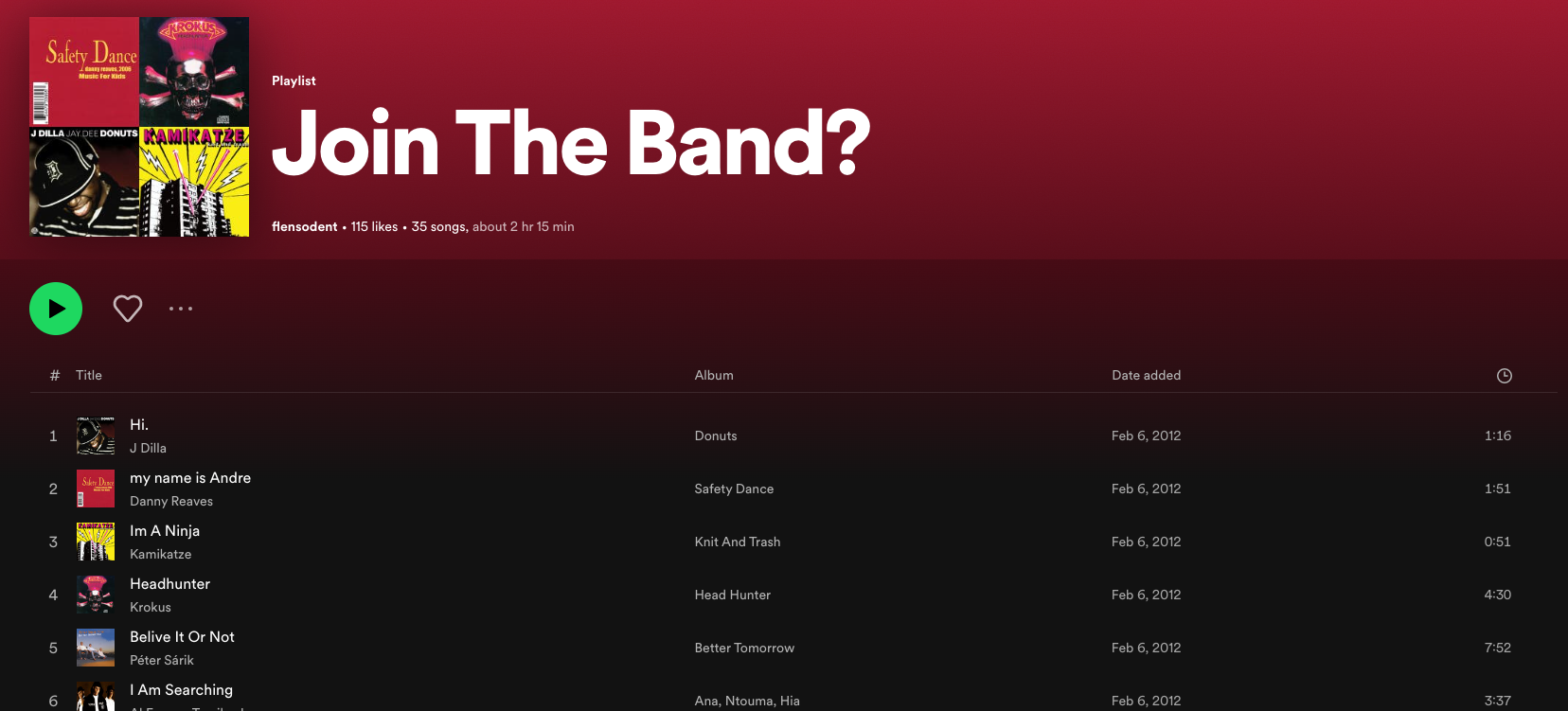
22. Attract talents with a catchy WiFi name
If the name of your office Wifi is seen by many people daily, it might be a good idea to change it to a catchy recruiting headline. Willem Wijnans from Sourcing Monk has highlighted some creative methods that companies have used to attract talent (mostly developers), like for instance, advertising your current job opening with a Wifi name.
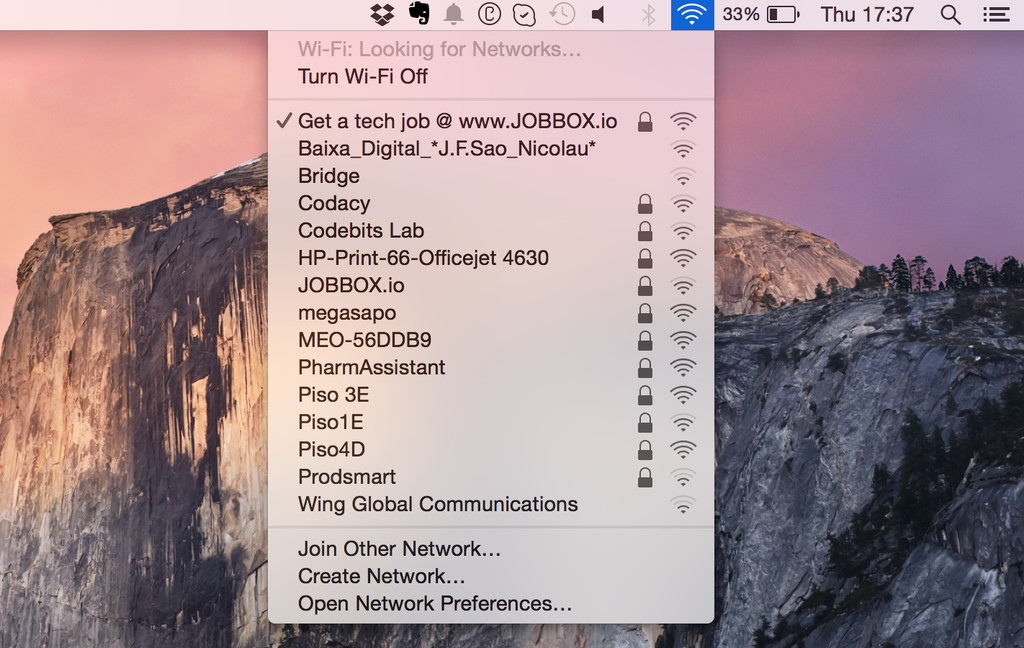
Factors that can make candidate sourcing difficult
Most candidates will run a Google search related to the companies they’re interested in during the job search process. And will be weary of any organization that has bad reviews or ratings on Google, Facebook, or Glassdoor, to name a few. So it’s important to monitor and respond to these to secure your future talent pipeline.
Did a customer have a bad experience? Contact them to resolve it. Did a previous employee not like the business or the CEO, for example? Implement new policies to improve your company’s image. Today’s workforce won’t tolerate bad employment and salary practices.
Bonus: The obvious sourcing tips
This article is all about creativity, but that doesn’t mean you shouldn’t think through the basics. Before you whip out your cellphone and start filming the CEO doing silly dances (more on that later!), be sure you’ve ticked off the following criteria in your job posts:
- Write descriptive and catchy job descriptions – A well-written job ad will increase the percentage of people who engage with it.
- Add the salary range to your job posting – Excluding the salary from the job posting often results in getting plenty of candidates whose salary expectations may not fit with what you can offer. As a result, both parties will waste a lot of time during the hiring process.
- Mention the company’s perks and benefits – Even if it is something as small as free coffee and snacks in the office, mentioning the perks you offer in the job opening ad or a career page can help grab potential candidates’ attention.
- Use your public website to let people know you’re hiring – A great way to inform people about your job openings is to advertise it on the product website’s front page.
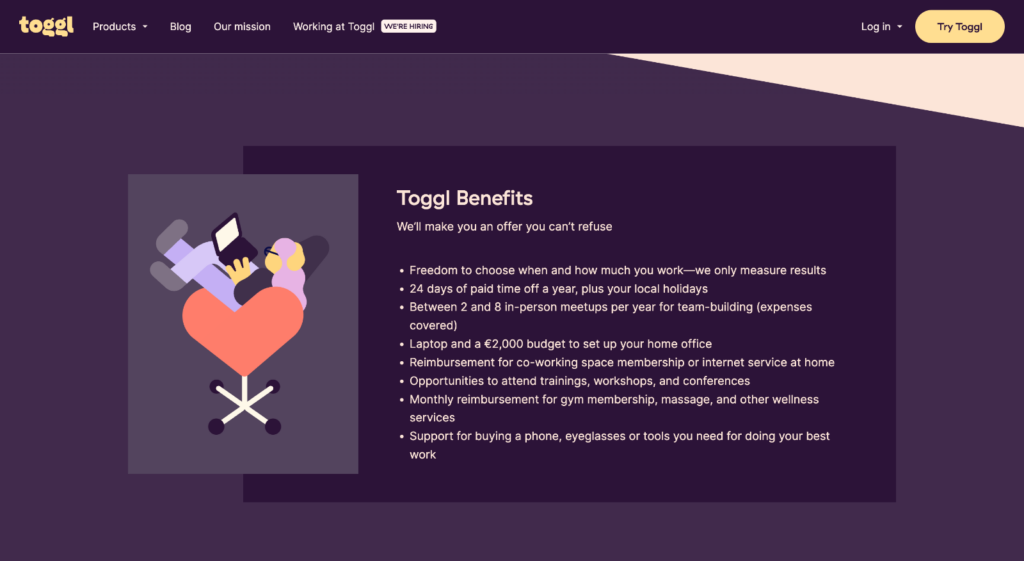
Tip! Structure your statements to describe the job to an individual unfamiliar with the department or position. Use the following model to get everything right: Action Word + Subject + Specific Activities.
How to attract passive candidates with Toggl Hire
Finding new talent and potential passive candidates in a competitive market is difficult. And as we discussed above, it requires a lot of out-of-the-box thinking.
Hiring managers need to cover every relevant social media platform, job site, job fair, and network until they just can’t anymore. By using Toggl Hire, we can ease some of the burdens before and during the recruitment process.
You can create and share fun quizzes or tests that will help you assess and screen a potential candidate’s competence and skills with our Test Library. Or create video interviews that showcase a future employee’s personality with Video Intros.
We’re here to maximise your time and minimise your effort so that you can focus on filtering out the best candidates from the talent pool.
Juste loves investigating through writing. A copywriter by trade, she spent the last ten years in startups, telling stories and building marketing teams. She works at Toggl Hire and writes about how businesses can recruit really great people.
